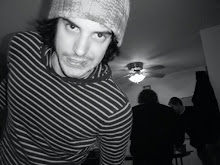 “Now, I say to you today my friends, even though we face the difficulties of today and tomorrow, I still have a dream. It is a dream deeply rooted in the American dream. I have a dream that one day this nation will rise up and live out the true meaning of its creed: / we hold these truths to be self-evident, that all men are created equal.” This is a quote from Martin Luther King Jr. that in my own personal opinion sums up the journey that Johnsons Park Neighborhood has embarked upon, from the past to the present and into the future.
“Now, I say to you today my friends, even though we face the difficulties of today and tomorrow, I still have a dream. It is a dream deeply rooted in the American dream. I have a dream that one day this nation will rise up and live out the true meaning of its creed: / we hold these truths to be self-evident, that all men are created equal.” This is a quote from Martin Luther King Jr. that in my own personal opinion sums up the journey that Johnsons Park Neighborhood has embarked upon, from the past to the present and into the future.This blog is about my adventures and interactions within the Johnsons Park Neighborhood and the inhabitants who live there and documented video and photography of the area. This blog also presents the changes that have taken place within Johnsons Park Neighborhood, the rich history that it has, and also the American dream that has made all of these great changes thus far, possible. Without the “dream” of a few hard working, unrelenting individuals who wanted nothing more then to see their neighborhood be a great, safe place to live, the transformation of the Johnsons Park Neighborhood might have never taken place. This in and of its self is a true testament of how anyone in this country can achieve anything as long as you are willing to work for it.
The photographs as well as the videos on this blog are how I have viewed this neighborhood as well as Service Learning project though my own eyes and my own experiences. From an artistic standpoint I wanted this blog to be about the changes in Johnsons Park Neighborhood that were made possible through hardworking individuals mainly the people that I was able to interview. I also wanted this blog to be about my adventures that I have gone through within this class and service learning. I took my self out of the interviews and used text because of time constrictions. We had to edit about 160 minutes of video down to a 5-7 minute video. We were very much there involved and engaged the people we interviewed. It was as much of us getting to know the people of the neighborhood as it was also about getting to hear their story. I personally decided not to edit any of my photographs. One, because I really don’t know Photoshop all that well but also because I wanted to capture how the neighborhood really is as if you were right there some of the worlds most profound pictures are true to life and that’s why I decided not to edit my photographs.
During my work on this project I got to meet a lot of great people, people who care about their neighborhood and people who have worked all their lives to make a difference in Johnsons Park Neighborhood for the next generation. This blog is my adventures and the times I spent in Johnsons Park Neighborhood.













